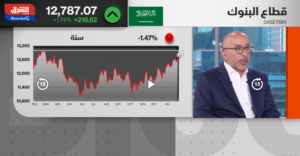UAE’s listed companies allowing full foreign ownership makes quite a statement
Longer term, the removal of foreign owner limits will free up more capital flowing into the UAE
On June 11, 1720, the UK Parliament passed what came to be known as the Bubble Act, which banned the formation of new joint stock companies without prior authorization through Royal charter.
The motive was clear. There was a need to keep the prices of the South Sea shares at stratospheric levels, given the speculation that was already underway at the time with instalment plans, easy loans, options and other measures where speculators had to put up less and less cash to acquire assets. The impact, however, was the opposite; the bubble had burst and would never rise again.
The lesson was clear, no legislation can prevent the bursting of a financial bubble, something that we are seeing with the price action of the crypto space. However, subsequent legislation that not only reversed the Bubble Act but encouraged the formation of companies, meant capital formation became the heart of capital and housing markets. This became another lesson for the regulators: liberalization of asset ownership was the only way to align the interests of economic growth and the median investor.
Offset headwinds to some extent
It is in this context that the liberalization of ownership of Emaar needs to be analyzed. Removing curbs on its ownership has been part of an impulse to broaden asset ownership of the economy, something that it embarked upon in 2002 with the landmark freehold legislation. Since then, through a series of steadily progressive measures, regulation has meant that liquidity has continued to be released into the domestic economy in a way that allows for the small investor to own a piece of the country’s growth story.
To be sure, there is no way to avoid short-term headwinds that continue to buffet the economy, in the way the current environment of rising inflation and interest rates will likely dampen demand. But it is equally true that other companies will likely follow suit, both those listed, as well as the ones that are looking to list in the medium-term.
This will propel not only a surge in listings but also an increase in demand for investors looking for safer havens, especially as they stampede out of assets such as crypto and NFTs. Greater ownership and listings propel secondary market liquidity and forms a virtuous cycle towards attracting new investors.
In the coming months, SME companies, looking to be on the fence in terms of listing on the smaller or ‘second’ markets, will likely move towards going public. Larger corporates will equally look for boosting foreign ownership, and some might go down the road of offering secondary share offerings as they look to increase their capital base.
Better use of capital
In other words, the risk-on appetite will be much more visible in the domestic asset markets, and even detach or lower their correlation to international markets. There is another lesson for the regulators, one that the UAE has recognized very well and put into practice repeatedly.
Formation of capital can be accelerated through regulation. Asset prices will react to the maxim of the ‘invisible hand’ and people will always pay whatever they want to for assets that they feel are valuable. This is part of the price discovery process. However, the absence of curbs on ownership allows for liquidity and capital formation to accelerate and find their way to productive avenues, in such a way that benefits both the economy as well as the median investor.
Just like the Bubble Act went down in history as an example of a failure of regulation, the legislation passed by the UAE will be remembered for ushering in a period of long-term capital formation and growth. History is recorded asymmetrically: the pain is always recorded with greater detail than the periods of growth, and media would do well to course correct their bias.
However, asset ownership liberalization will surely go down in the annals of the great libraries as a pivotal move towards greater democratization of wealth formation.





